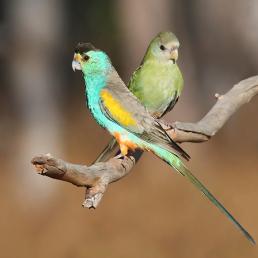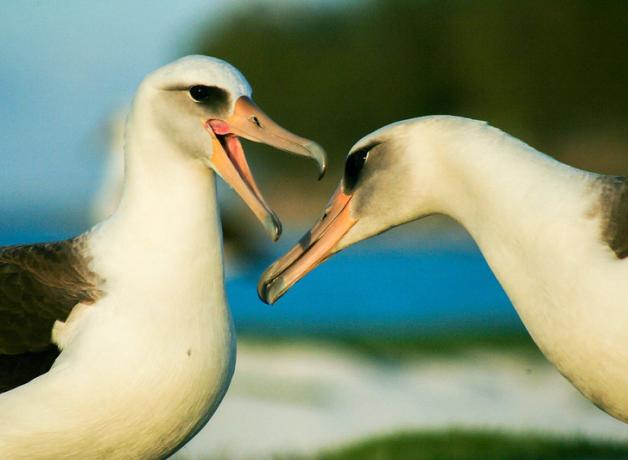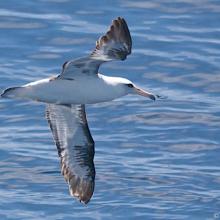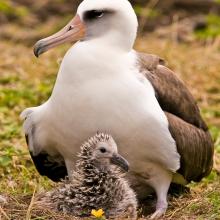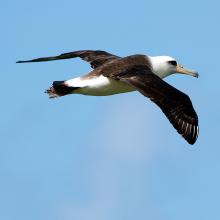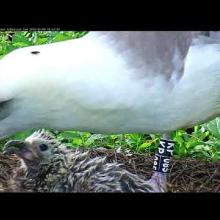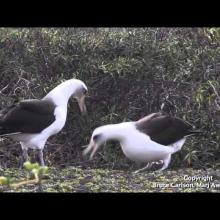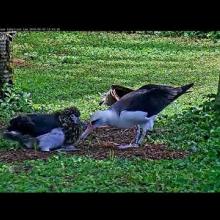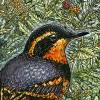

Join BirdNote tomorrow, November 30th!
Illustrator David Sibley and actor H. Jon Benjamin will face off in the bird illustration battle of the century during BirdNote's Year-end Celebration and Auction!
Bird beaks, or bills, come in many shapes and sizes. And birds use them for just about everything: to collect food, preen, fight, court (as this pair of Laysan Albatrosses is doing), chop holes in trees, weave nests, and more. In order for a bird to fly, its beak must weigh as little as possible. Beaks are covered with a sheath of a tough material called keratin, which grows continuously because a beak wears down with use.
BirdNote®
What’s a Beak Made Of?
Written by Bob Sundstrom
[clattering of Laysan Albatrosses - https://macaulaylibrary.org/asset/5009]
This is BirdNote.
Bird beaks, or bills, come in many shapes and sizes. And birds use them for just about everything: to collect food, preen, fight, court, chop holes in trees, weave nests, and more.
[Hairy Woodpecker drumming - https://macaulaylibrary.org/asset/63109]
But in order for a bird to fly, its beak must weigh as little as possible. So beaks have evolved to be ultralight, like birds’ hollow bones and feathers.
Just what is this versatile appendage made of?
At its core, both upper and lower halves of a beak contain light bony projections that extend from the skull. These bony parts are covered with a sheath of a tough material called keratin (pronounced CARE-uh-tun). It’s the same stuff that makes up tortoise shells, the scales and claws of reptiles, and our own hair and fingernails. The keratin sheath makes the beak tough, durable, and shiny. The sheath grows continuously, because a beak wears down with use.
[Black Oystercatcher- https://macaulaylibrary.org/asset/137860]
Picture a shorebird, like this Black Oystercatcher, flipping rocks and hammering shells all day.
Ancient birds were weighed down with jaws and teeth, making flight far more challenging. But the beak of a modern bird, whether it belongs to an eagle, toucan, or hummingbird, is a marvel fit for life on the wing.
For BirdNote, I’m Mary McCann.
###
Bird sounds provided by The Macaulay Library of Natural Sounds at the Cornell Lab of Ornithology, Ithaca, New York. Recorded by: 5009 Laysan Albatross, D Pratt; 63109 Hairy Woodpecker, D Herr; 137860 Black Oystercatcher, G Vyn.
BirdNote’s theme music was composed and played by Nancy Rumbel and John Kessler.
Producer: John Kessler
Managing Producer: Jason Saul
Associate Producer: Ellen Blackstone
© 2018 Tune In to Nature.org May/June 2018/2022 Narrator: Mary McCann
ID# bill-05-2018-06-08 bill-05
